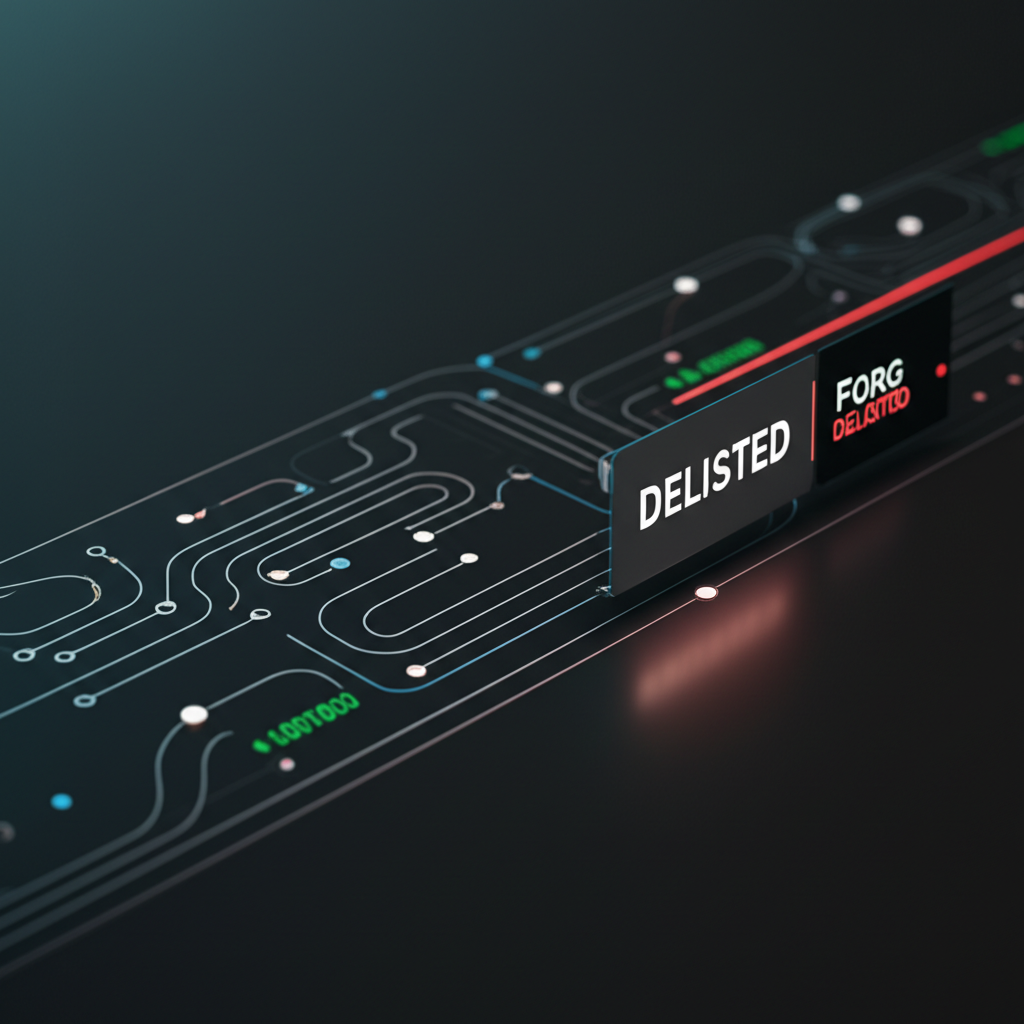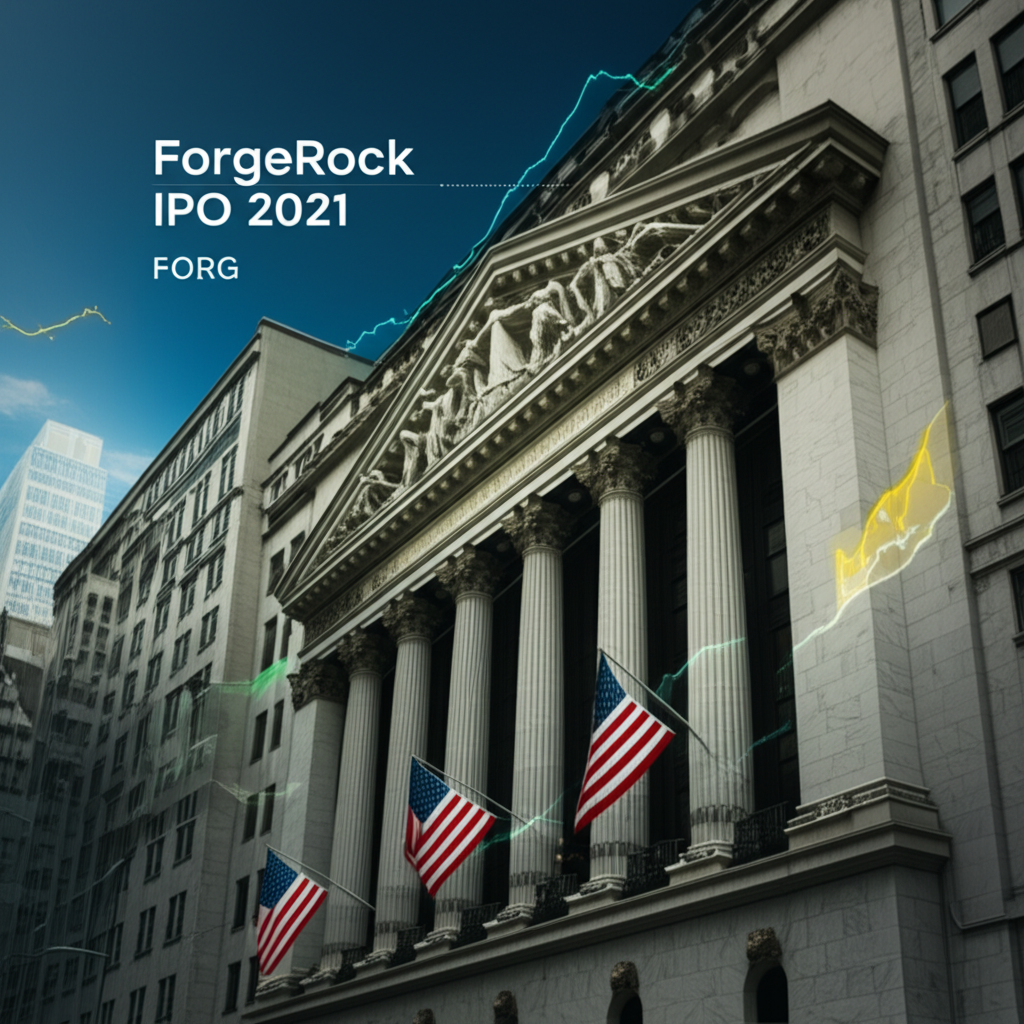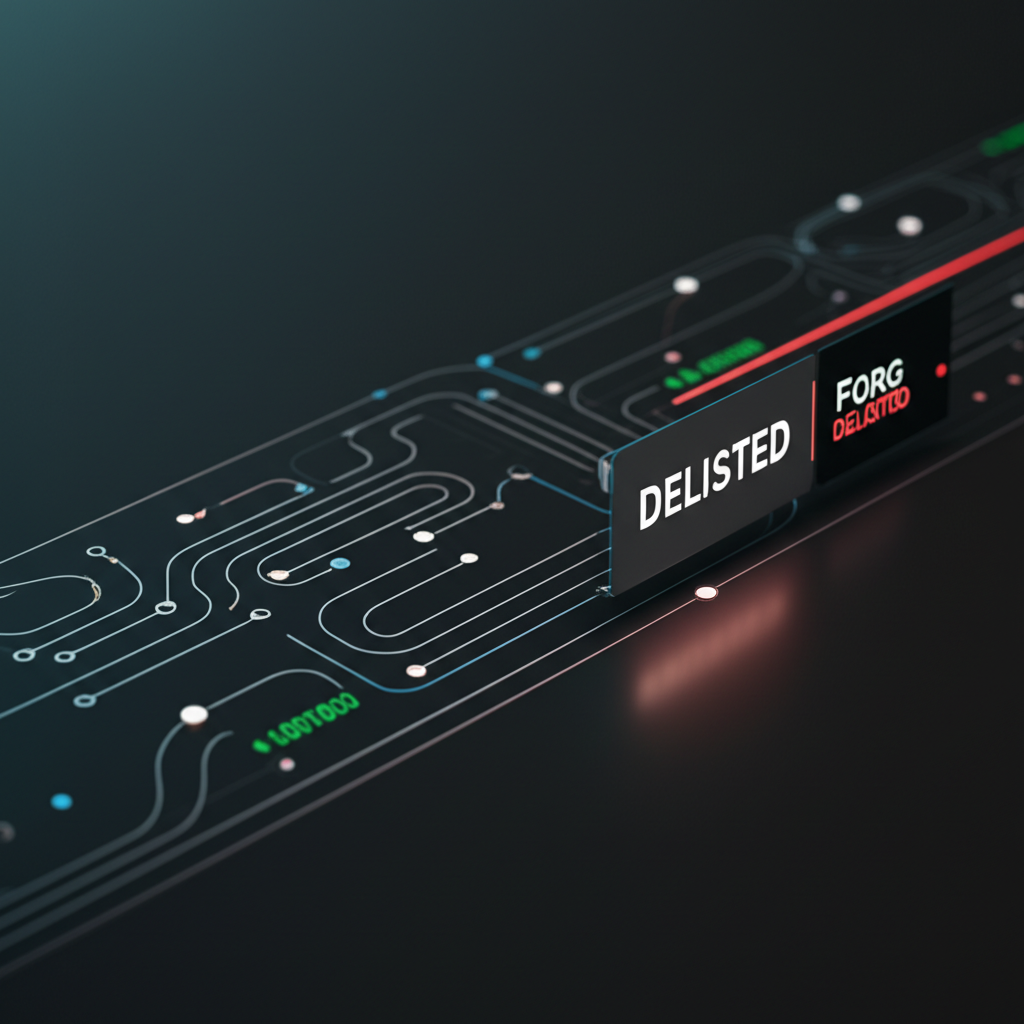Introduction: Understanding the ForgeRock Ticker (FORG)

ForgeRock Inc. emerged as a key innovator in the digital identity space, offering advanced identity and access management (IAM) solutions tailored for enterprises managing complex user ecosystems. For a time, it captured investor attention under the ticker FORG after going public on the New York Stock Exchange. However, that chapter has now closed. The company is no longer available for public investment, marking a definitive shift in its corporate structure. This article explores the full arc of ForgeRock’s public market journey, from its IPO to its acquisition and subsequent privatization. If you’re tracking down information about FORG stock, the reality is straightforward: it no longer trades on any public exchange. What follows is a comprehensive look at how and why that change occurred, and what it means for the company’s future in the evolving cybersecurity landscape.
ForgeRock (FORG): Company Overview and Business Model

At its core, ForgeRock built a powerful platform designed to manage digital identities across three critical domains: customers, employees, and connected devices. Its technology stack included identity management, access control, directory services, and governance tools—all unified under a flexible, API-first architecture. This approach enabled organizations to create secure, personalized digital experiences while meeting strict compliance requirements such as GDPR, CCPA, and HIPAA. Unlike one-size-fits-all solutions, ForgeRock’s platform was particularly well-suited for large-scale deployments in highly regulated industries like banking, healthcare, telecommunications, and government. By offering fine-grained control over authentication, authorization, and identity lifecycle management, the company positioned itself as a go-to provider for enterprises needing robust, scalable IAM infrastructure. Its open standards-based design also allowed seamless integration with existing IT environments, making it a preferred choice for organizations undergoing digital transformation.
The FORG Stock: Public Listing History and Key Milestones

ForgeRock entered the public markets with considerable momentum, listing on the NYSE on September 16, 2021, under the ticker FORG. The IPO priced at $25 per share, raising approximately $400 million to support expansion, research and development, and strategic initiatives in an increasingly competitive IAM sector. The move to go public reflected growing investor confidence in cybersecurity, especially in identity-centric solutions driven by cloud adoption, remote work, and rising cyber threats. In the months following its debut, FORG stock experienced the volatility typical of newly public tech companies, influenced by macroeconomic conditions, earnings reports, and sector-wide trends. At its high point, the company achieved a market capitalization exceeding $2 billion, underscoring the market’s recognition of its technological capabilities and long-term potential. While it never reached the scale of larger peers like Okta or Microsoft Entra, ForgeRock carved out a respected niche, particularly in customer identity and access management (CIAM), where its platform offered deep customization and enterprise-grade security.
The Acquisition by Thoma Bravo: What Happened to ForgeRock Stock?

The trajectory of ForgeRock took a decisive turn when private equity powerhouse Thoma Bravo announced its intention to acquire the company. On October 10, 2022, Thoma Bravo revealed plans to purchase ForgeRock in an all-cash deal valued at around $2.3 billion. This move was part of a broader trend of private equity firms targeting mature software companies with strong product foundations and recurring revenue models. The acquisition was finalized on July 24, 2023, officially ending ForgeRock’s status as a publicly traded entity. From that date forward, the company transitioned into private ownership, operating independently of quarterly earnings pressures and shareholder expectations. The deal highlighted Thoma Bravo’s continued focus on cybersecurity and enterprise software, sectors where it has built a formidable portfolio through strategic acquisitions. More details about the transaction can be found in the official announcement released by Thoma Bravo confirming the completion of the acquisition.
Implications for FORG Shareholders
For investors who held shares in ForgeRock, the acquisition brought a clear and immediate outcome: full liquidity. Under the terms of the agreement, shareholders received exactly $25.00 in cash for each share they owned—a figure that matched the IPO price but represented a premium over the stock’s trading value in the weeks leading up to the announcement. This cash-out transaction meant that all public equity stakes were extinguished, and no new shares or equity in the private entity were issued to former investors. Once the deal closed, trading of FORG stock ceased entirely on the NYSE. Brokerage accounts automatically reflected the payout, and shareholders could no longer buy or sell the stock. While some may have hoped for a longer public run or a future revaluation, the acquisition provided a clean exit and a tangible return on investment.
The Delisting Process and Its Significance
The delisting of FORG from the New York Stock Exchange was a procedural necessity following the acquisition. When a public company is acquired in a take-private transaction, it no longer meets the listing requirements maintained by exchanges like the NYSE, which demand public float, minimum share prices, and ongoing financial disclosures. As part of the process, ForgeRock filed the appropriate documentation with the Securities and Exchange Commission (SEC), including a Form 15 to suspend its reporting obligations. Delisting doesn’t mean the company ceased operations—in fact, ForgeRock continues to serve its global client base—but it does mean that ownership is now concentrated within Thoma Bravo and its affiliated funds. For the broader market, the removal of FORG from trading platforms signals the end of public access to this asset. It also reflects a strategic choice: by going private, ForgeRock gains the freedom to pursue long-term goals without the scrutiny and short-term performance demands that come with being publicly listed.
ForgeRock in the IAM Market: Pre- and Post-Acquisition Landscape
Before its acquisition, ForgeRock stood as a formidable player in the identity and access management space, often mentioned alongside leaders like Okta, Ping Identity, and Microsoft. Its platform was especially favored by organizations with complex identity needs, such as multinational banks needing secure customer login systems or healthcare providers managing access to sensitive patient data. While competitors leaned heavily into cloud-native simplicity, ForgeRock distinguished itself with deep configurability, hybrid deployment options, and strong support for open standards like OAuth, OpenID Connect, and SCIM. However, it faced challenges in scaling brand awareness and competing with the aggressive marketing and sales engines of its rivals. Now, as a privately held company, ForgeRock is poised to reposition itself. Freed from public market pressures, it can invest more aggressively in innovation, expand into emerging markets, and refine its go-to-market strategy. This shift may allow it to respond more nimbly to industry changes, particularly as identity becomes even more central to zero-trust security frameworks and digital customer engagement.
The Future of ForgeRock Under Thoma Bravo
Under Thoma Bravo’s ownership, ForgeRock is expected to undergo a period of strategic reinvention and accelerated growth. The private equity firm has a proven track record of acquiring software companies, streamlining operations, boosting R&D investment, and preparing them for eventual resale or IPO. In ForgeRock, Thoma Bravo gains a mature platform with a loyal enterprise customer base and a strong technical foundation. The coming years may see increased investment in artificial intelligence and machine learning to enhance identity analytics, automated threat detection, and adaptive authentication. There’s also potential for geographic expansion, particularly in regions like Asia-Pacific and Latin America, where digital identity infrastructure is still developing. Additionally, ForgeRock could pursue targeted acquisitions to fill product gaps or strengthen specific capabilities. While the company no longer answers to public shareholders, its mission remains unchanged: to deliver secure, seamless, and scalable identity solutions that empower digital transformation. With deeper pockets and long-term vision, Thoma Bravo may well position ForgeRock for a resurgence in the IAM arena.
Conclusion: Navigating the Post-Public ForgeRock Era
ForgeRock’s evolution from a publicly traded innovator under the FORG ticker to a privately held entity marks a pivotal moment in its corporate journey. Though the stock is gone, the company endures—now with the flexibility and resources to pursue ambitious goals without the constraints of public markets. For former investors, the acquisition delivered a clear and fair exit. For the broader tech and cybersecurity communities, ForgeRock remains a significant force in identity management, particularly for enterprises with sophisticated needs. As digital identities become more critical across every industry, the demand for secure, intelligent IAM solutions will only grow. Under Thoma Bravo’s stewardship, ForgeRock has the opportunity to innovate more freely, scale more aggressively, and solidify its place in the next generation of identity platforms. The FORG ticker may be retired, but the company’s impact on the digital world is far from over.
Frequently Asked Questions (FAQs)
What is the stock symbol for ForgeRock, and is it still publicly traded?
ForgeRock’s former stock symbol was FORG. However, ForgeRock Inc. is no longer publicly traded. It was acquired by Thoma Bravo and delisted from the New York Stock Exchange (NYSE).
What happened to ForgeRock Inc. after its acquisition by Thoma Bravo?
After its acquisition by Thoma Bravo, ForgeRock Inc. became a privately held company. Its stock was delisted from the NYSE, and it now operates under the ownership and strategic guidance of Thoma Bravo.
When was ForgeRock (FORG) acquired, and for what price per share?
The acquisition of ForgeRock by Thoma Bravo was announced on October 10, 2022, and completed on July 24, 2023. Shareholders received $25.00 per share in cash for their FORG stock.
What does the delisting of FORG stock from the NYSE mean for investors?
The delisting of FORG stock means it is no longer traded on any major public stock exchange. Former investors received a cash payout for their shares at the time of the acquisition’s completion, and they can no longer buy or sell ForgeRock stock on the open market.
What was ForgeRock’s business, and what industry does it operate in?
ForgeRock specialized in digital identity and access management (IAM) solutions. It operated in the cybersecurity industry, providing platforms for managing and securing customer, workforce, and device identities for large enterprises.
How did ForgeRock’s stock perform historically before the acquisition?
ForgeRock went public on the NYSE in September 2021 at $25 per share. Its stock performance before the acquisition saw fluctuations typical of growth-stage technology companies, influenced by market conditions and company-specific news. Detailed historical data is no longer publicly accessible through live trading platforms.
What are the implications for former ForgeRock shareholders following the acquisition?
Former ForgeRock shareholders received a cash payment of $25.00 per share upon the completion of the acquisition. Their ownership in ForgeRock was extinguished, and they no longer hold shares in the company.
How does ForgeRock compare to competitors like Ping Identity or Okta in the IAM market?
ForgeRock was a strong competitor to companies like Ping Identity and Okta, particularly for complex enterprise deployments and customer identity solutions. While Ping Identity and Okta remain publicly traded, ForgeRock, as a private entity, can now pursue long-term strategies without public market pressures, potentially shifting its competitive approach.
What is the future outlook for ForgeRock as a private company under Thoma Bravo?
As a private company under Thoma Bravo, ForgeRock is expected to focus on accelerating growth, enhancing its product portfolio, and expanding its market reach. Thoma Bravo’s investment typically aims for strategic optimization and long-term value creation, potentially leading to further innovation and market consolidation for ForgeRock.
Where can I find the last known financial data for ForgeRock Inc.?
Prior to its delisting, ForgeRock’s financial data was available through its SEC filings (e.g., 10-K, 10-Q reports) on the SEC EDGAR database. After becoming private, its financial statements are no longer publicly disclosed.

留言